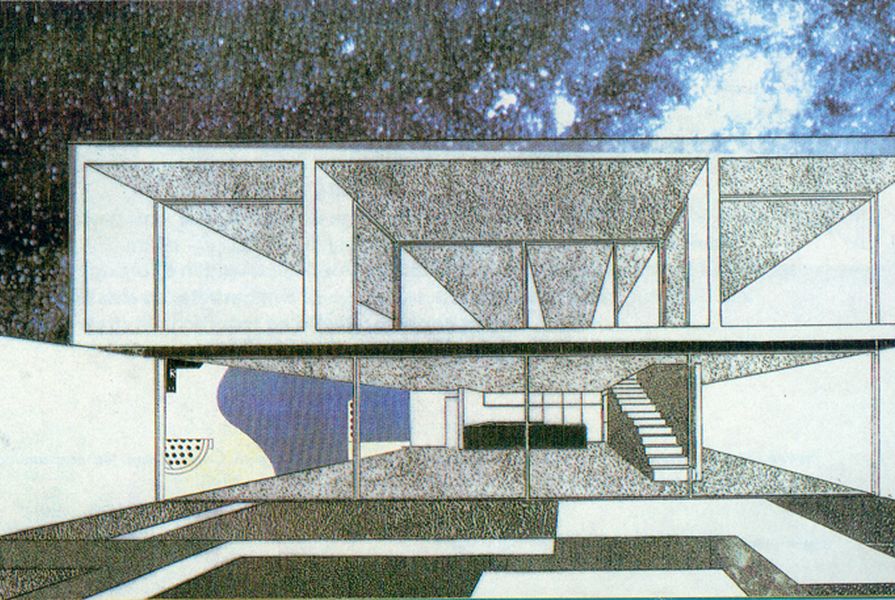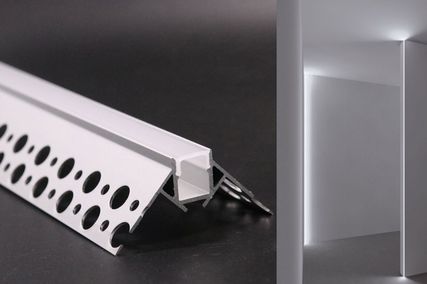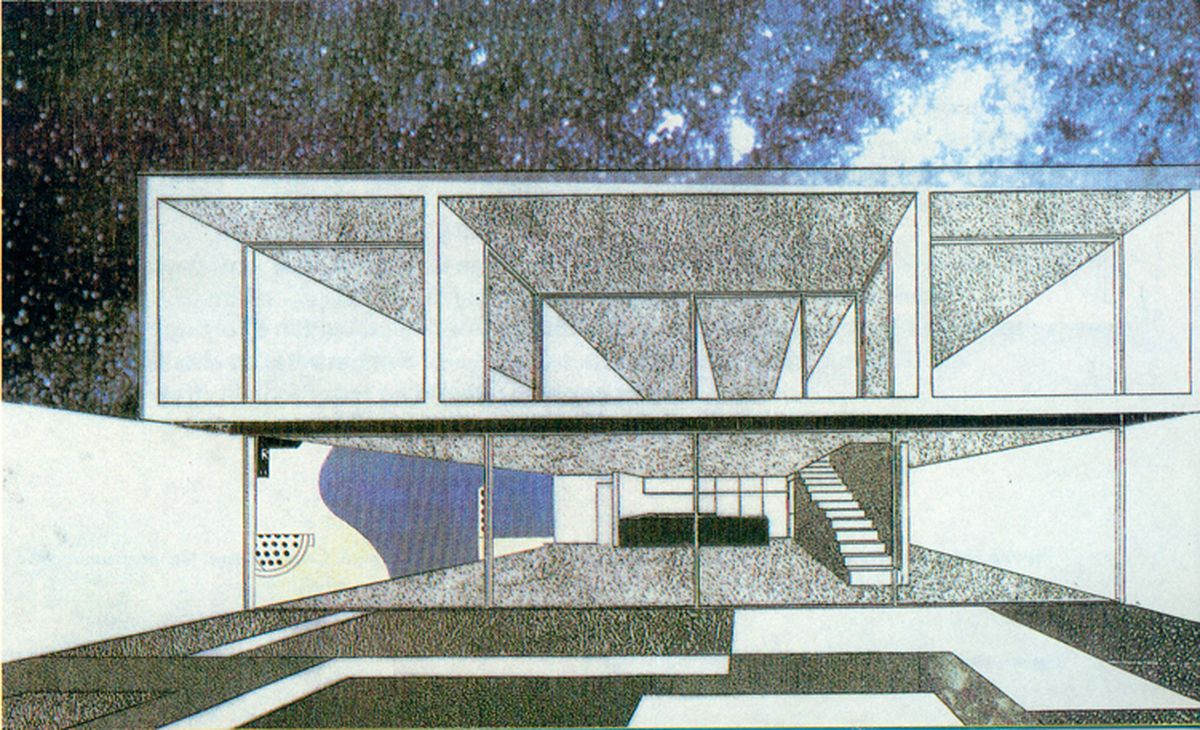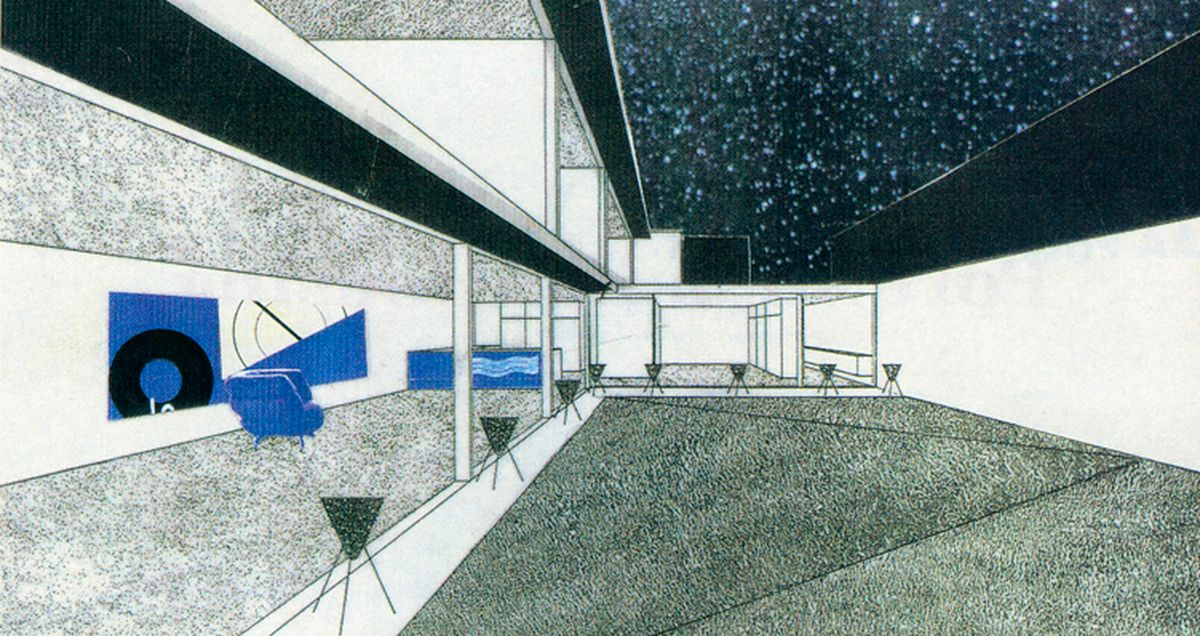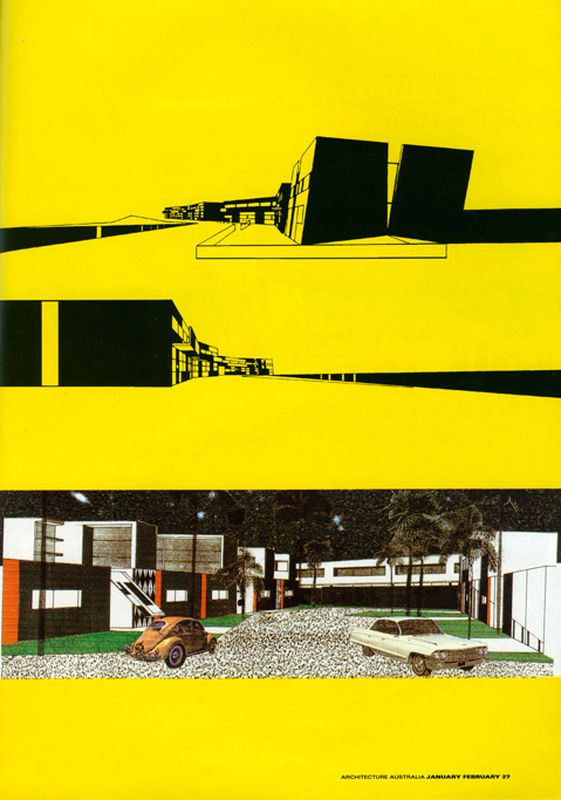Michael Markham and Abbie Galvin didn’t gain a mention in the NHP/MFP Lifting the Vision competition to design medium density housing for a large vacant block in Port Adelaide. Not surprising. Their scheme appears to subvert the intentions of the organizers, who were seeking, according to Markham, “a more or less standard medium-density development”: a village for the proposed multi-function polis which conformed with the federal government’s draft AMCORD Guidelines for Urban Housing.
Instead the architects have gleefully critiqued the MFP’s “overt internationalist agenda,” which suggested to them the idea of a city as theme park. “We sought something a little more hopeless and inauthentic, shamelessly a sham, a resistance that might collapse that rhetoric, converting it into something slightly pathetic and, in our way, utterly regional.”
The site is an ordinary block in a residential area, bounded by busy Victoria Road on the east (front) side, by state housing to the north, the Peter Cousins Reserve to the south and a railway station to the west (rear).
The brief called for 65 units, as many as possible on Torrens Title, with off-set car parking. Markham and Galvin proposed two types of housing. One is a mat of 12 metre square courtyard houses, each with an aridly landscaped, north-facing court, and a second storey occupying only part of the ground floor. Plans vary to allow these houses to be grouped in different formats from a single dwelling to a combination of nine,
There is also a sequence of row houses facing the Peter Cousins Reserve; a line-up which kinks on plan to follow the boundary of the reserve, yet the kink would disappear in a frontal view as a result of optical adjustments to the elevations.
Three cul-de-sac streets are provided, each wavy to reduce traffic speed and landscaped to a different international theme: Australian, Californian, English Picturesque.
One of three cul-de-sacs, landscaped as “California Street” in Michael Markham and Abbie Galvin’s Port Adelaide Housing proposal.
Proposed materials include white glazed brick for most north and south walls, dark grey textured brick for most east and west walls, aluminium windows, corrugated steel roofing and steel garage doors painted with murals.
Jury comments
A belligerent but exciting challenge to conventional expectations
– Davina Jackson
A long overdue look at the principles of courtyard housing
– Geoffrey London
Alternative concepts for living to those sponsored by the ignorant real estate industry
– Ian McDougall
With a common framework, it creates individuality and desireable living conditions
– Alex Popov
Demonstrates an alternative to the urban masterplan, using additive rather than reductionist strategies
– Kerstin Thompson
Abbie Galvin is a juror for the 2021 AA Prize for Unbuilt Work. Entries to the prize can be made via its website until 21 August 2020.
Winners will be announced in the January/February 2021 issue of Architecture Australia and on ArchitectureAU.com.

